When it comes to the world of wine, the taste and aroma are often the focus of attention. But hidden beneath those layers of flavor lies a microscopic microorganism that is responsible for some of the most intriguing and complex characteristics in certain wines. Enter Brettanomyces bruxellensis (Brett), a wild yeast strain that can either be a winemaker’s worst nightmare or a welcomed guest, depending on who you ask.
History of Brettanomyces
Brettanomyces bruxellensis origins trace back to the Carlsberg brewery in Denmark where it was first discovered in 1904. It was initially isolated from beer and identified due to its contribution to the distinct flavors found in ale, stout, porter beers and belgian style ales. In 1940 it was also isolated from Belgian lambic beers.

Brett strains in wine spoilage
Wine spoilage can be attributed to a type of yeast commonly referred to as Brettanomyces bruxellensis or Brett yeasts in the wine industry. These yeasts are notorious for causing unwanted spoilage during the maturation process of wine. The slow growth rate of Brett combined with its ability to tolerate high levels of ethanol and carbon dioxide allows it to thrive within stable wines that are left undisturbed in cellars for extended periods of time.
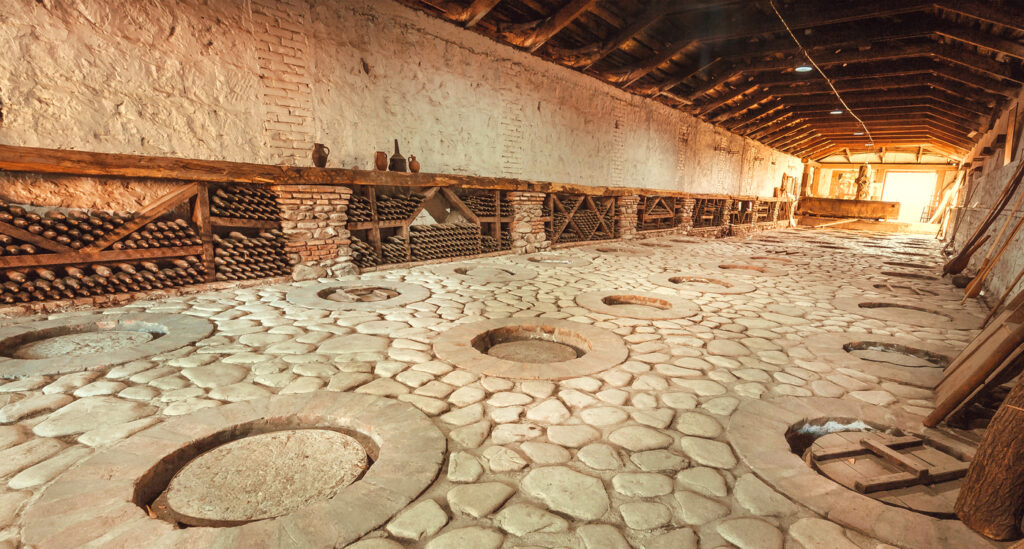
These yeasts are responsible for producing off-taints that negatively impact the aroma and desirability of wines, including phenolic and mousy flavors. Once a wine is tainted with these aromas, it becomes unsalvageable, leading to substantial economic losses for winemakers.
How to stop Brettanomyces Bruxellensis?
How to stop Brettanomyces Bruxellensis?
The prevention of cross contamination necessitates strict quarantine protocols and meticulous record-keeping due to the difficulty and incompleteness of sanitizing oak barrels. Effective prevention of Brettanomyces contamination in wines primarily relies on maintaining high standards of winery sanitation to eliminate its occurrence altogether.
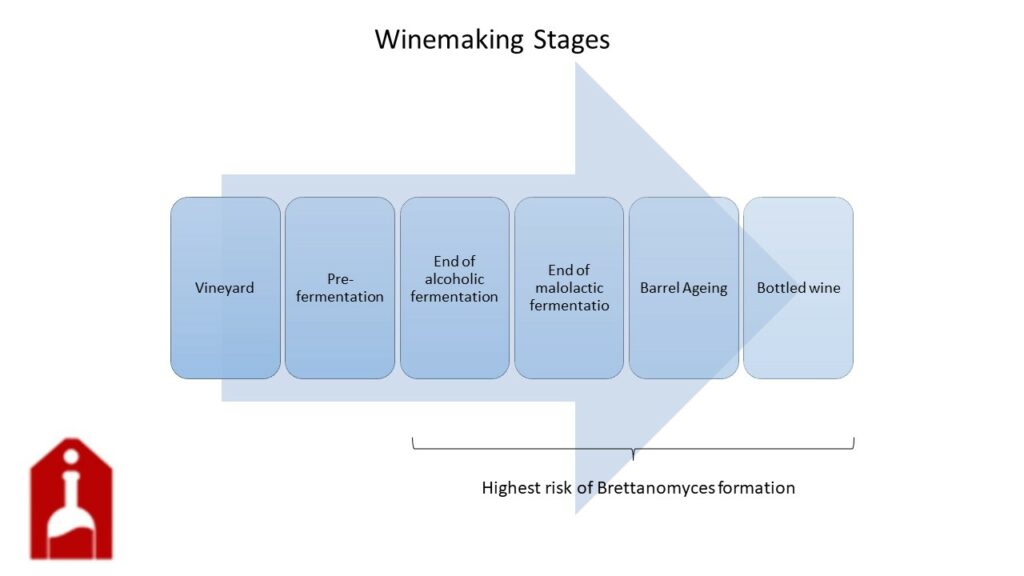
In addition, the growth of Brettanomyces bruxellensis may be influenced by intrinsic properties of the wine, such as certain strains being impacted by ethanol levels and potentially adapting to varying concentrations over time.
An alternative approach to stop the formation of Brettanomyces yeasts is to reduce the time between alcoholic fermentation and secondary fermentation steps like the malolactic fermentation. This can be done by addition of carefully selected lactic acid bacteria or wine bacteria. They work by reducing the concentration of molecules Brettanomyces bruxellensis converts into compounds which are responsible for the Brett character.
Growth of Brettanomyces
In the wine storage environment this yeast species benefits from microaeration in oak barrels during wine maturation. Even small amounts of oxygen can trigger secondary metabolism and result in off-aromas. These yeasts grow in a temperature range of 15-25°C.
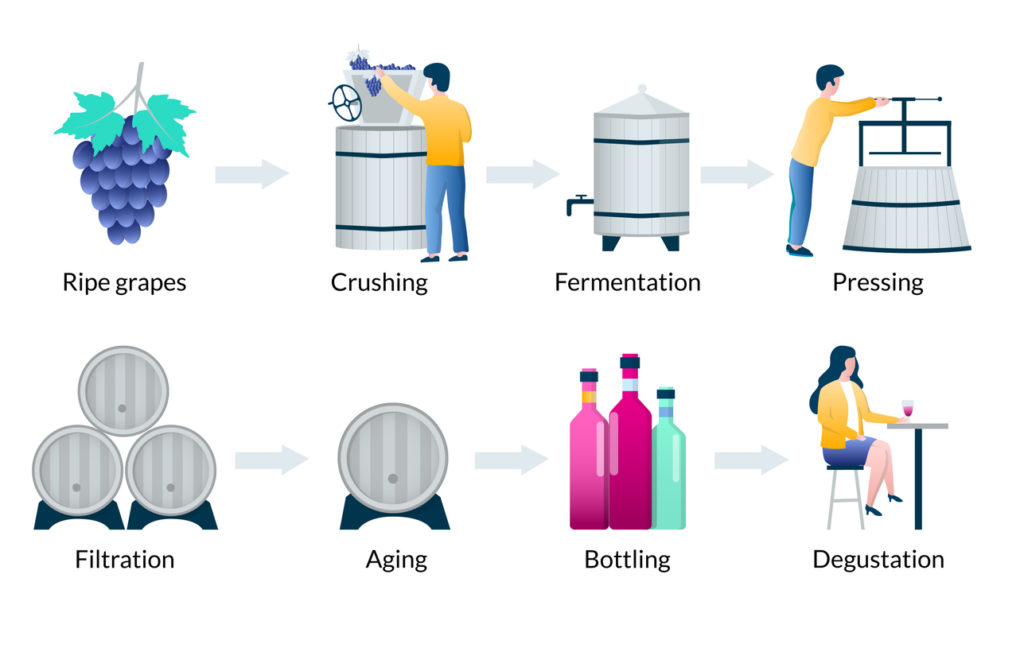
The optimal approach to hinder Brettanomyces growth in wine involves utilizing sulfur dioxide application. Ensuring adequate control over acidity levels in wines is essential, especially post-bacterial malolactic fermentation, as the existence of the molecular form of sulfur dioxide relies on pH levels.
Influence of Brettanomyces on Wine flavor
Yeast Brettanomyces, often referred to as Brett originating from belgian style ales, is a type of yeast that can have a significant impact on the flavor profile of wine. While it was once considered a fault in winemaking, many modern winemakers now embrace Brett fermentation as it adds complexity and character to certain styles of wine. Brett yeast typically imparts unique aromas such as barnyard, horse blanket, or even sweaty leather notes.

Characteristic Brett Character
But what exactly causes these distinctive flavors? It’s all about the compounds produced by this yeast during fermentation. Brettanomyces bruxellensis consumes certain grape sugars that other yeast strains cannot consume during alcoholic fermentation. This secondary yeast fermentation results in the production of volatile phenols.
These phenolic compounds known from craft brewing are responsible for the characteristic aromas associated with Brett-influenced wines. At the same time the level of residual sugars is reduced yielding a drier wine.
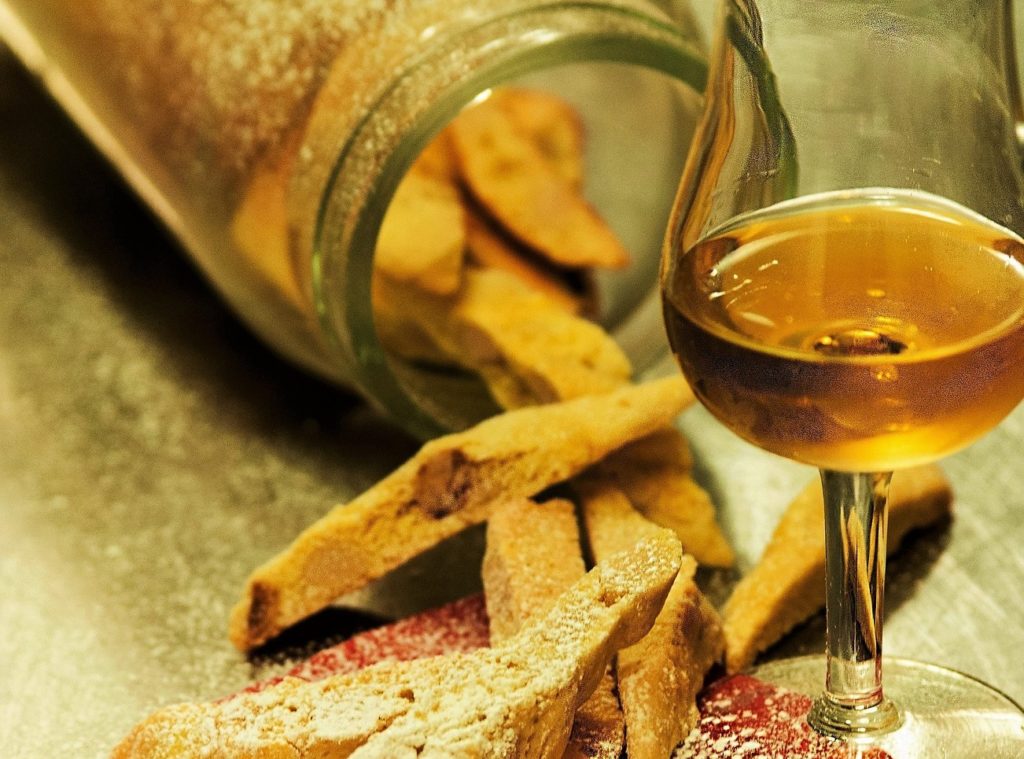
Formation of aroma compounds by Brettanomyces bruxellensis
This unique combination of sensory aromas serves as a reliable indication of Brettanomyces lambicus contamination within wineries and encompasses scents such as spice, smokiness, medicinal notes, band-aid-like odors, horse-like fragrances, and animal descriptors. Volatile phenols are primarily responsible for these aromas, although acetic acid production and fatty acids also play a role.
Aroma Compounds
Specifically, volatile phenols like 4-ethylphenol and 4-ethylguaiacol exhibit sensory activity above a concentration threshold. Initially derived by breaking down hydroxycinnamic esters, these compounds undergo decarboxylation to form intermediates. These are compounds like 4-vinylphenol and 4-vinylguaiacol before ultimately being transformed into aromatic compounds through reduction processes.

Among the various microorganisms present in the wine ecosystem, only Brettanomyces yeast possesses the unique ability to produce these compounds at levels substantial enough to noticeably influence the taste and aroma of the wine.
Advantages of Brettanomyces on wine
When used judiciously and under controlled conditions, though, Brett can elevate the sensory experience of certain robust reds or funky natural wines. Its ability to transform an ordinary wine into something truly extraordinary has led some dedicated enthusiasts to seek out bottles specifically known for their Bretty nuances.

Negative impact of Brett Character on wine
One of the most dreaded wine errors, often referred to as Brett, is the presence of Brettanomyces aroma compounds in barrel aged red wines. While some wine enthusiasts may find a hint of these compounds charming and perceive it as an expression of complexity, this characteristic can actually have a detrimental impact on the overall quality and taste of the wine. The presence of Brettanomyces can lead to off-putting aromas resembling barnyard, Band-Aid, or sweaty horse saddle.
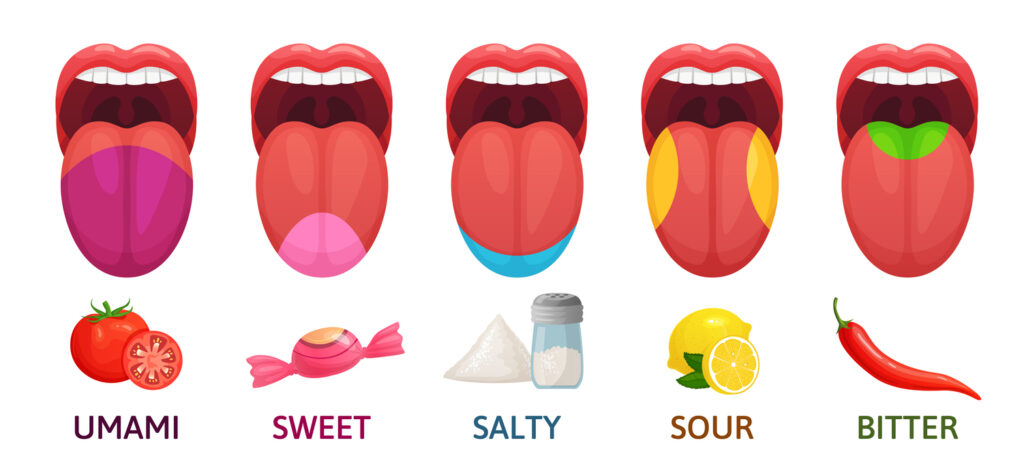
The negative impact lies in the fact that these aroma compounds overpower and mask other desirable aromas in the wine. They diminish its fruitiness and freshness. The funky notes produced by Brettanomyces can be particularly disagreeable. Especially when they dominate over delicate floral or fruity fragrances that are meant to be showcased.
Wine faults other than Brettanomyces
Some of the most discerning wine connoisseurs can detect even the slightest wine fault, a flaw that compromises the integrity and enjoyment of a bottle.
Cork Taint
One such fault is cork taint, caused by a chemical compound called TCA. It imparts an unpleasant moldy aroma to the wine, dampening its true flavors and aromas. While some winemakers have turned to alternative closures like screw caps or synthetic corks to minimize this issue, traditionalists argue that natural cork remains an important cultural symbol in the world of wine.

Oxidation
Another common wine fault is oxidation, which occurs when a wine comes into contact with too much air. Instead of vibrant fruit flavors and freshness, an oxidized wine displays flat and dull characteristics. Some winemakers intentionally expose their wines to controlled amounts of oxygen during aging. This develops complex flavors, but if left unchecked, oxidation can render a once-promising bottle undrinkable.
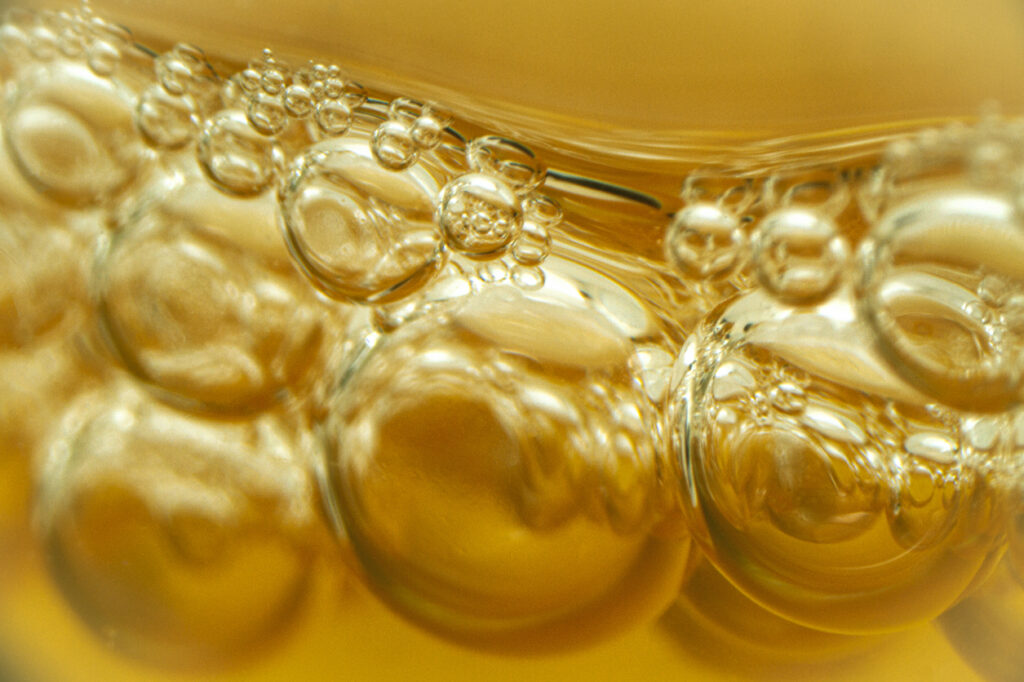
To prevent this fault from occurring prematurely, proper storage conditions are crucial. A cool cellar with consistent temperature and humidity levels can help preserve a bottle’s intended qualities for years to come.
Despite the negative associations with these faults, some enthusiasts argue that they add depth and complexity to certain styles of wines. For example, proponents of oxidized white wines praise their nutty profiles and oxidative sherry-like notes.
Positive use of Brettanomyces in the wine industry
When it comes to exploring the world of wine fermentation, one cannot overlook the fascinating use of Brettanomyces. It is a wild yeast strain that adds complexity and depth to certain wines. One such noteworthy example is Chateau Beaucastel in Chateauneuf-du-Pape, France. This iconic winery has embraced the use of Brettanomyces in their fermentation process. They introduce this unpredictable yet intriguing element into their renowned blends.

Chateau Beaucastel, France
Brettanomyces, often referred to as Brett, can be both a blessing and a curse for winemakers. Some argue that its presence can lead to undesirable off-flavors and aromas reminiscent of barnyards or band-aids. Others believe that when used judiciously and with control, Brettanomyces can contribute unique earthy and spicy characteristics in barrel aged red wines. These enhance the overall complexity and aging potential of the wine. At Chateau Beaucastel, they have mastered this delicate balancing act. The winemakers utilize Brett in small quantities. This adds an additional layer of intrigue without overpowering or dominating the final product.
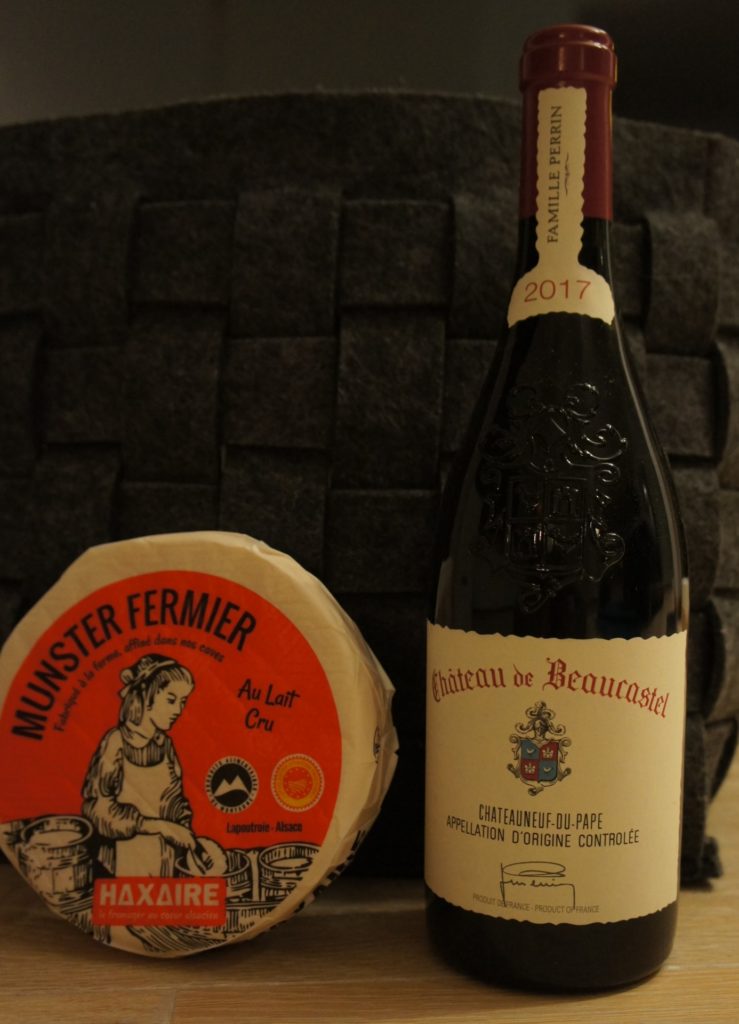
The decision by Chateau Beaucastel to embrace Brettanomyces goes beyond simply following trends or experimenting with new techniques. Instead, it reflects their commitment to innovation while staying true to tradition. By carefully selecting specific grape varieties and closely monitoring secondary fermentation conditions, they have honed their expertise in using Brett as a tool rather than allowing it to become a flaw.
Chateau Musar, Lebanon
One unique example of how Brettanomyces has shaped the identity of a wine comes from Chateau Musar, located in Lebanon’s Bekaa Valley. Although considered a flaw by many winemakers, at Chateau Musar it is embraced as an integral part of their winemaking process.

Chateau Musar’s red wines are known for their complex and earthy character. They show hints of leather and barnyard notes that can be attributed to Brettanomyces. However, what sets Chateau Musar apart is their ability to strike a delicate balance between its presence and dominance. Instead of overpowering the wine with Brett characteristics, they allow it to evolve over time. This adds layers of complexity that enhance rather than detract from the overall experience.

While other wineries might shy away from embracing Brettanomyces due to potential spoilage risks or consumer preferences for clean and predictable flavors. Chateau Musar’s approach challenges conventional wisdom. Redefining what constitutes quality in wine production and highlighting the unique terroir-driven elements that come from this yeast strain. Chateau Musar has become celebrated among sommeliers and connoisseurs around the world. Especially if you are seeking adventurous flavors beyond typical fruity profiles prevalent in most wines today.
Does Brettanomyces affect white wines or red wines?
When it comes to wine production, the presence of Brettanomyces can have profound effects on the final product. While red wines are commonly associated with having this yeast strain, it should be noted that it can also impact white wines.

Traditionally, Brettanomyces is known for imparting earthy and funky aromas to red wines, often described as barnyard or band-aid-like scents. However, recent studies have shown that even in white wines with lower levels of phenolic compounds this yeast strain can still survive and alter the organoleptic flavor profile. (Phenolic compounds typically provide a favorable environment for Brettanomyces growth.
Red wine vs white wine
These findings challenge long-held beliefs about Brettanomyces’ impact solely on red wines. In fact, researchers have uncovered evidence suggesting that this yeast might play a more significant role in shaping white wine characteristics than previously thought. Its contribution may be subtle in comparison to what is observed in reds. The presence of Brettanomyces can lead to unexpected and complex flavor profiles in whites. Winemakers must tread carefully when managing their barrels or fermentation vessels. They need to avoid any unwanted surprises caused by this microbial agent.
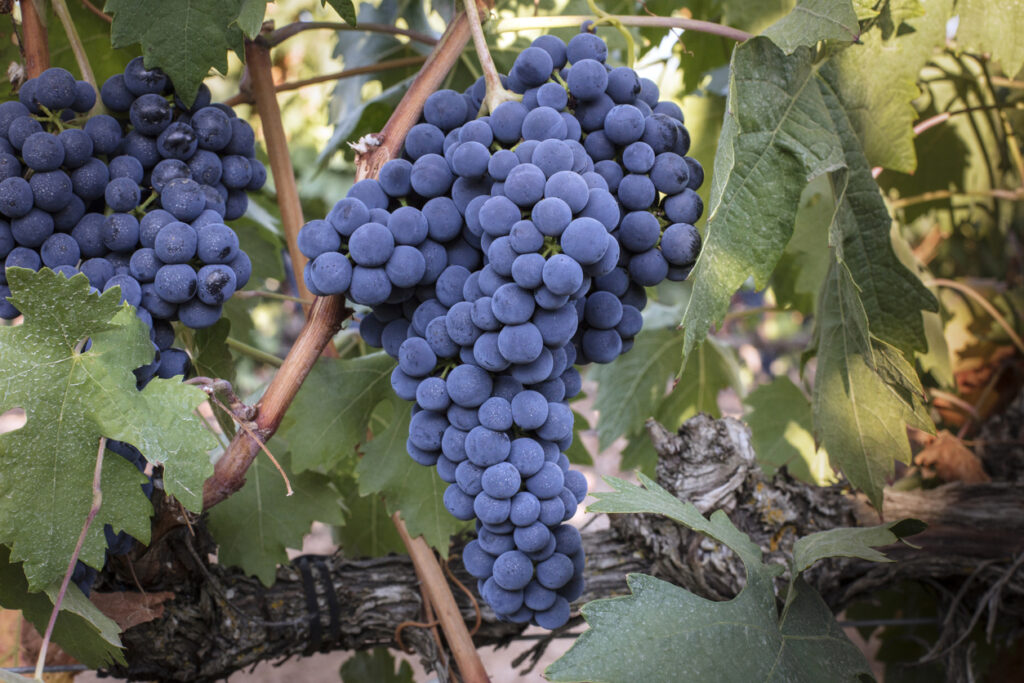
In conclusion, the impact of Brettanomyces on white wines may not always be as pronounced as its effect on reds. Winemakers cannot ignore its potential influence during production.
Which grapes are prone to Brettanomyces
When it comes to identifying grapes that are prone to Brettanomyces, it’s important to consider both the region and the grape variety itself. Certain regions have a reputation for having higher levels of Brettanomyces contamination. These are Bordeaux in France and certain areas in California. However, one must also take into account the grape varietals that are commonly grown in these regions.
Red Wines
One such grape variety that is often associated with Brettanomyces is Syrah. This bold and powerful red wine grape is known for its potential to develop barnyard-like aromas when infected with this yeast. Another grape variety susceptible to Brettanomyces is Cabernet Sauvignon. Particularly prevalent in regions like Bordeaux and Napa Valley, when infected with Brett, Cabernet Sauvignon can exhibit earthy or leathery notes which some drinkers find off-putting.

Specific grapes may be more prone to Brettanomyces. It’s worth noting that this yeast can potentially infect any wine during the winemaking process. This happens if proper sanitation measures aren’t taken. Therefore, understanding which grapes are more susceptible can help winemakers implement preventative measures before fermentation begins. By taking into account both region and grape variety characteristics, winemakers can make informed decisions on how best to combat or avoid unwanted Brettanomyces influence. At the same time preserving the unique qualities of each varietal.
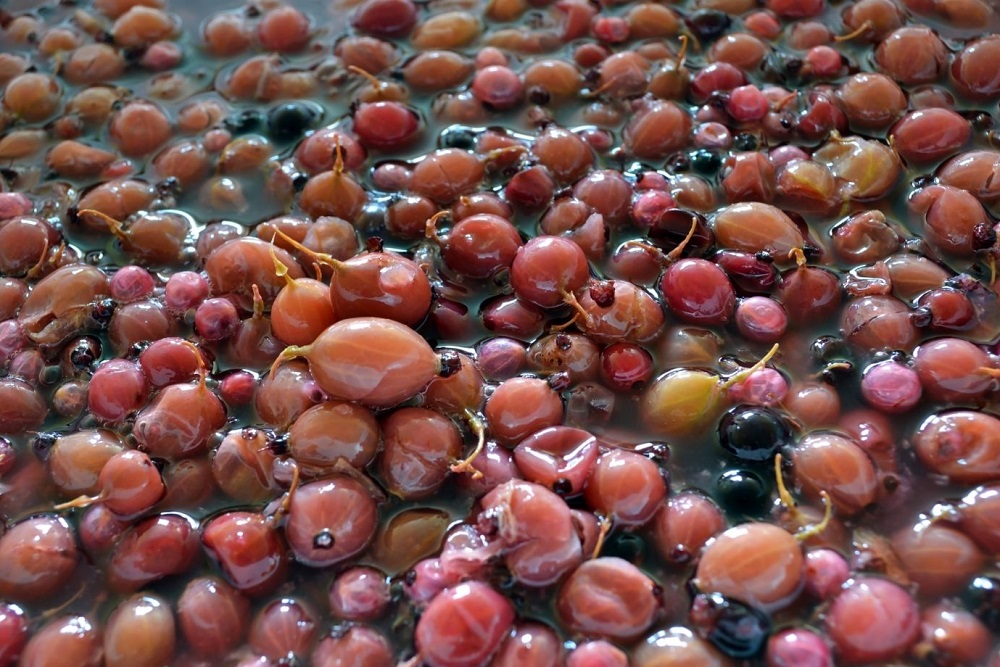
In the end the Brettanomyces contamination of your wine always depends on the hygienic measures during wine fermentations.
Influence of oak ageing vs steel ageing of wines on Brettanomyces
Brettanomyces is often referred to as Brett. It is a type of yeast that can have a significant impact on the flavor and aroma profile of wines. Traditionally, it has been associated with oak-aged wines. It is due to its ability to thrive in the porous structure of wooden barrels. The microorganisms present in Brett can metabolize certain compounds found in oak. This leads to the development of distinct flavors such as leather, spice, and barnyard.
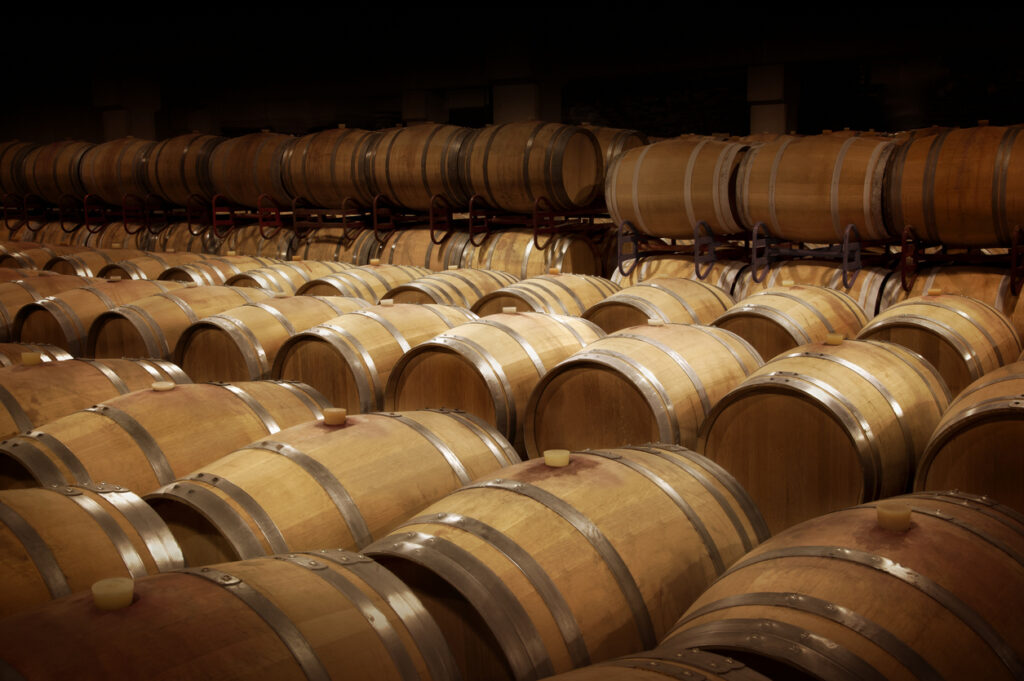
Oak barrels vs steel tanks
However, recent studies have shown that Brettanomyces can also affect steel-aged wines, although to a lesser extent. Stainless steel tanks provide a more sanitized environment compared to wooden barrels. They are not completely impervious to the intrusion of microorganisms. Although their presence may be minimal or controlled in comparison with wood aging methods due to rigorous winemaking practices and hygiene measures employed during fermentation and aging.

Nevertheless, some winemakers embrace the nuances that Brett imparts on their wines. This happens regardless of whether they are oak aged or steel aged. These unique characteristics can add complexity and intrigue for those seeking something different from their wine-drinking experience. However, it is important for wineries using either aging method to closely monitor for any signs of excessive or off-putting Brettanomyces activity. This could overwhelm the wine’s natural flavors and aromas.
Use of Brettanomyces in the Beer Brewing industry
Brettanomyces, also known as Brett for short, is a wild yeast strain that has had a significant impact on the beer brewing industry, particularly in the production of Belgian lambic beers. Traditional brewing practices focus on eliminating any presence of Brett due to its unpredictable nature and potential off-flavors. Lambic brewers have embraced this yeast as an essential component of their unique brews.
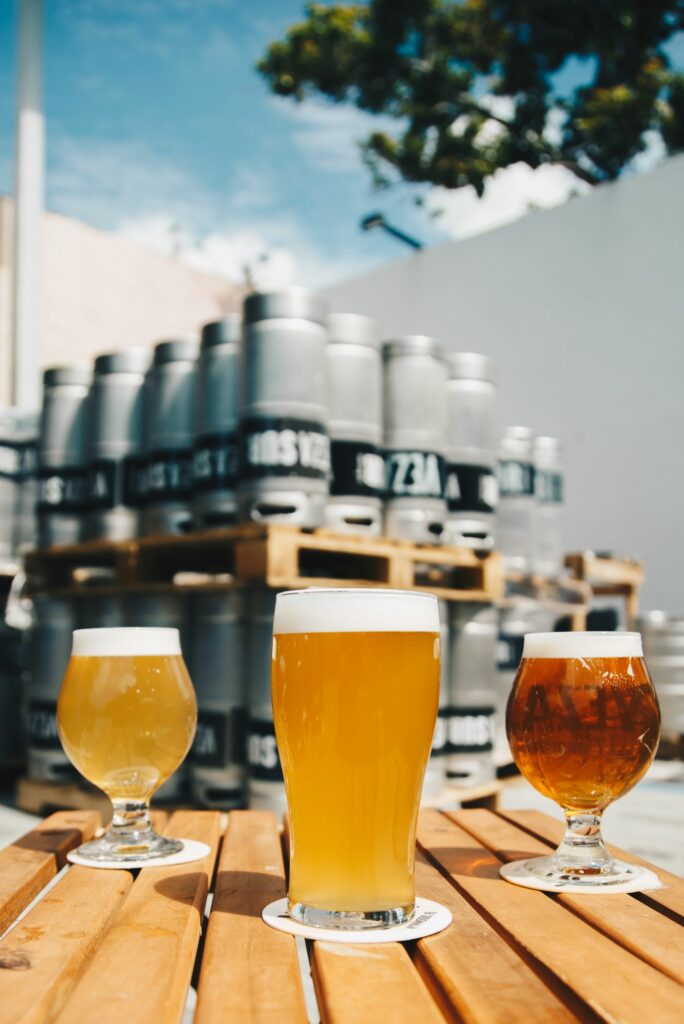
Complex Flavors
What sets Brett apart from other yeast strains is its ability to produce complex flavors and aromas that are often described as funky or barnyard-like. These distinct characteristics develop over time during the aging process in wooden barrels. Here yeast Brettanomyces interacts with other microorganisms present. The resulting beers stand out for their tartness, earthy notes, and sometimes even hints of tropical fruit.

Wild yeast
This intentional use of Brettanomyces challenges conventional notions about what makes a good beer. By embracing these wild yeasts and allowing them to work their magic in carefully controlled environments, lambic brewers have created a niche market for truly adventurous beer enthusiasts.
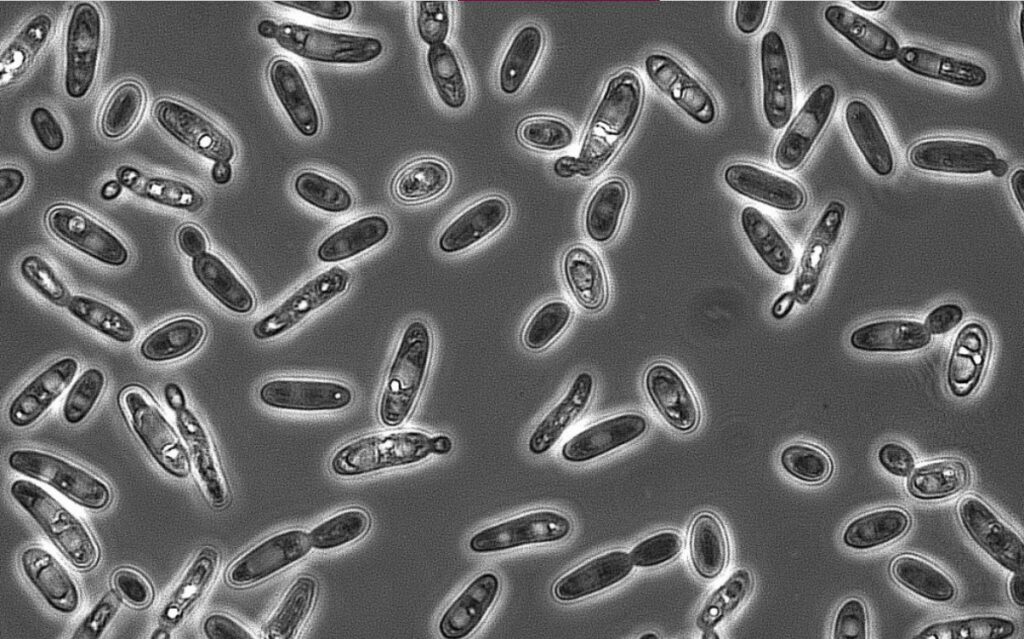
So next time you find yourself faced with a choice between a traditional ale or something labeled Brett-infected, don’t be afraid to take the leap into this funky world of Belgian lambics. You might just discover your new favorite brew!
Lambic beers are beer styles which are formed by spontaneous fermentation without addition of artificial yeast cultures.
Use of Brettanomyces in Lambic Beers
Brettanomyces, often referred to as Brett, is a wild yeast strain. It has both intrigued and confounded brewers in the beer industry for centuries. While it is primarily considered a spoilage organism, leading to off flavors and aromas in beer, some brewers have embraced its unique characteristics and incorporated it intentionally into certain styles of beer.

One of the most intriguing aspects of Brettanomyces is its ability to produce a wide range of flavor compounds during secondary fermentation. These can include fruity esters, earthy or barnyard-like aromas, and even tart or sour flavors. The unpredictable nature of Brett makes it an exciting challenge for brewers seeking to create complex and unconventional beers.
Brettanomyces used by Craft Brewers
Traditionally Brettanomycesis associated with Belgian-style beers such as Lambics and Saisons. It has now found its way into American craft breweries as well. Some breweries experiment with blending different strains or aging their beers in oak barrels. These are inoculated with Brett to develop new flavors over time. This exploration of Brett’s potential has led to a revival of interest in mixed fermentation and funky beers among consumers.

In conclusion, Brettanomyces represents both an opportunity and a risk for the beer brewing industry. Its wild character can either elevate or spoil a batch of beer. This depends on how it is managed by the brewer. Nonetheless, many see the challenges posed by Brett as an opportunity to push boundaries and explore new flavor profiles in their creations.

